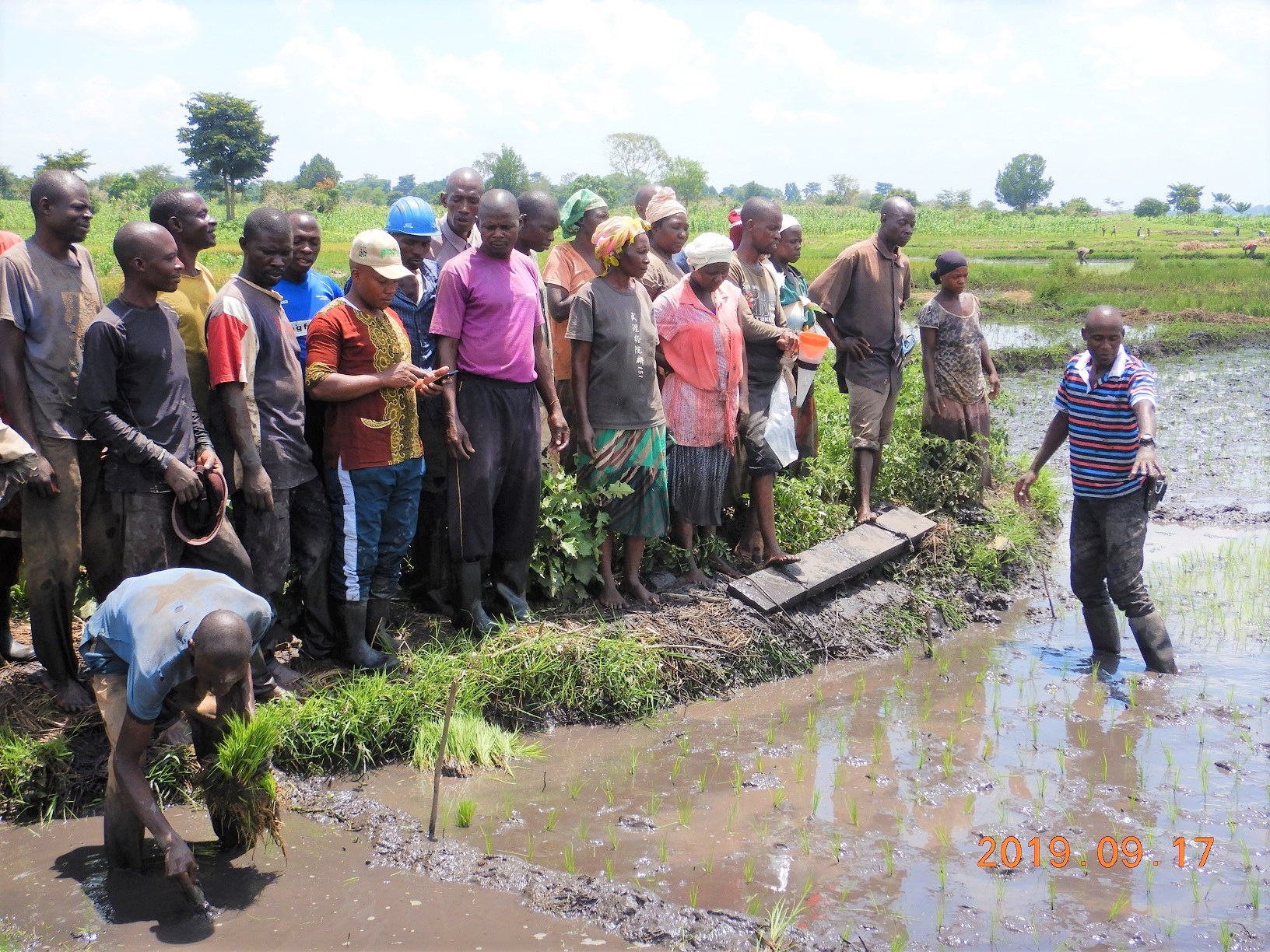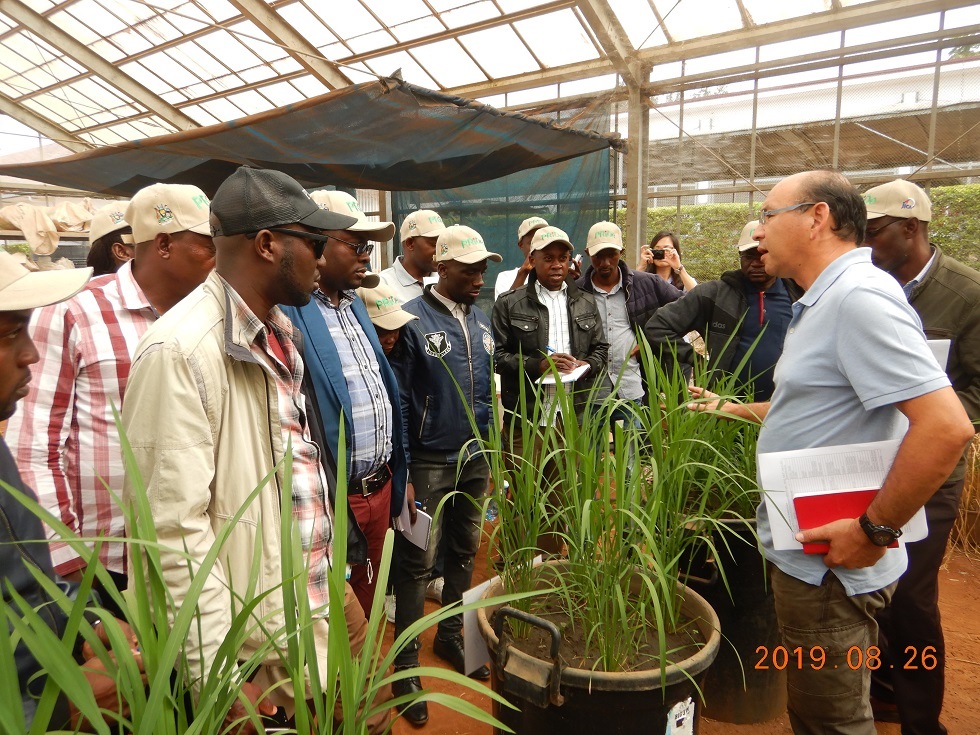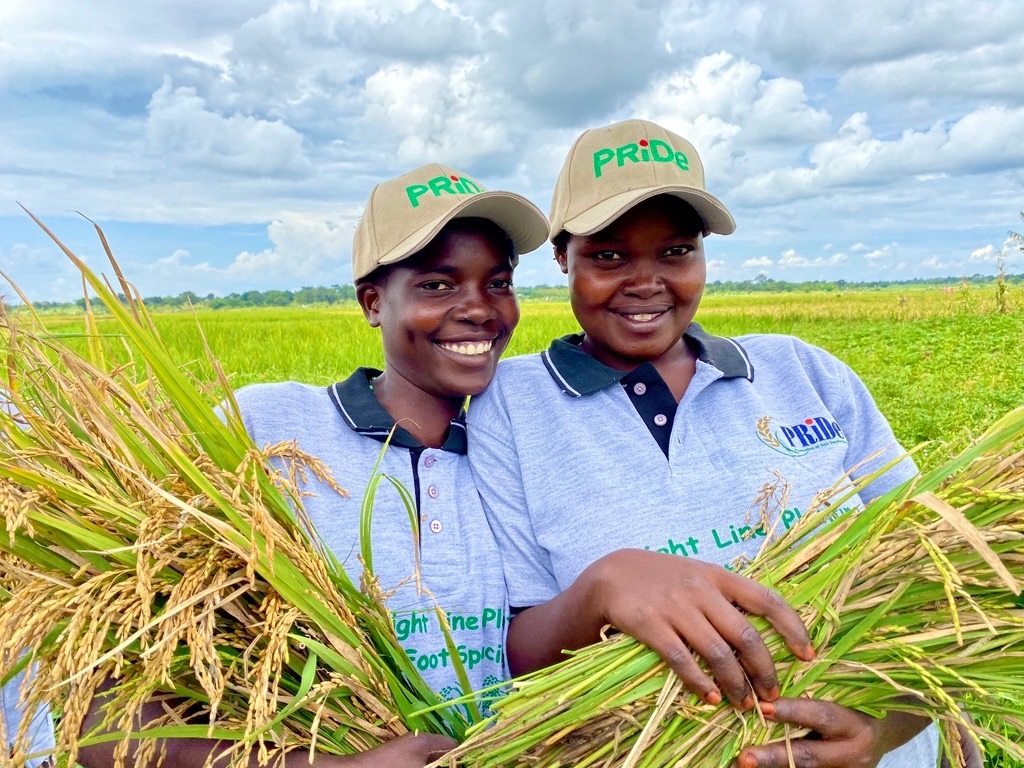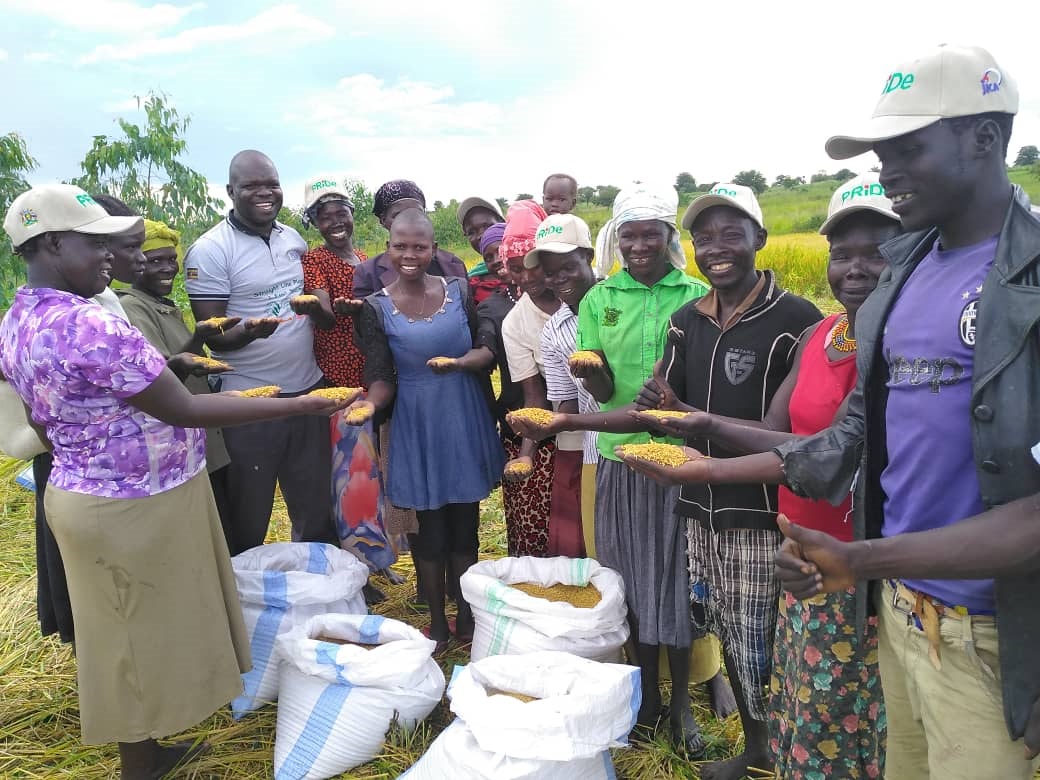The (VODP2) Project
PROJECT 1195 VEGETABLE OIL DEVELOPMENT PROJECT – PHASE 2
Implementing Agency: 010 Ministry of Agriculture, Animal Industry and Fisheries
Responsible Officer: C. M. Masaba
Location: Kalangala district, Buvuma district and 51 districts spread across Eastern Uganda, Northern Uganda and North Western Uganda
Total Project Value (Bn) 489.500
Internal Rate of Investment (IRR): 18%
Cost Benefit Analysis (CBA): 0.00
Net Present Value (NPV): 0.00
Start Date: 10/21/2010
Completion Date: 10/21/20184
Background:
Uganda imports 60-70% of its edible and soap needs; Population growth and rising incomes continue to fuel an annual growth rate of 9% in domestic and regional demand for vegetable oil and its by-products. VODP 2 is Uganda’s strategic effort and increase domestic vegetable oil production, address rural poverty by involving smallholder farmers in oil crops production and improve the health of the population through increased vegetable oil intake.
Objectives
The project goal is “To contribute to sustainable poverty reduction in the project area.” The development objective is “to increase the domestic production of vegetable oil and its by-products, thus raising rural incomes for smallholder producers and ensuring the supply of affordable vegetable oil products to Ugandan consumers and neighbouring regional markets.”
Outcomes
An integrated oil palm industry to supply national and export markets in compliance with modern environmental standards and providing equitable returns to smallholder producers; continued up-scaling of Lira to a modern agro industrial hub for oil seeds and the emergence of Eastern Uganda, Northern and West Nile as hubs for oil seed; increase in national vegetable oil self-sufficiency from 30% in 2008 to 60% in 2018.
Expected outputs:
Kalangala oil palm scheme of 11,200 hectares of oil palm planted completed and producing crude palm oil; Buvuma oil palm scheme of 2,500 initiated; Increase domestic production of oil seeds from 70,000 tons in 2008 to 150,000 tonnes by 2018; Increased per capita vegetable oil consumption from 5.6 kg/capita in 2008 to 7.0 kg/ capita in 2018; 139,000 smallholders farming oil seeds as a business.
Technical description of the project:
VODP 2 is a Public Private Partnership financed by the International Fund for Agriculture Development (IFAD), Oil Palm Uganda Limited (OPUL), the Government of Uganda (GOU) and smallholder farmers. The project provides extension and value chain services to smallholder farmers. The project also works with Uganda National Bureau of Standards (UNBS), National Agricultural Research Organization (NARO), the National Environment Management Authority (NEMA), National Seed Certification Service (NSCS) and Financial Institutions.
Project Achievements
In Kalangala district, the total area planted with oil palm is 10,924 hectares comprised of 6,500 hectares by the private sector partner on the nucleus estate and 4,424 hectares by smallholder farmers; the oil palm smallholder farmers benefitting from the project extension and marketing services in Kalangala are 1,810 with 652 females (36%); the annual production of crude palm oil has increased from 0 MT in 2010 to 141,367 MT in 2017; the 1,810 registered smallholder farmers in Kalangala have received UGX 34.5 billion for garden preparation, maintenance and inputs; the project has recovered UGX 15.3 billion from the smallholder oil palm farmers in Kalangala; the smallholder farmers in Kalangala have harvested 86838 MT of oil palm fresh fruit bunches (FFB) valued at UGX 39 billion. Annual FFB harvests are now estimated at 26,889 MT valued at UGX 15.7 billion; the number of farmers harvesting is now 1,074 on 3,021 hectares of oil palm; the project has constructed 358 kms of farm roads on Bugala Island which have improved movement of goods, services, people, inputs and produce. Environmental Impact Assessments carried out in Buvuma and the outlying islands of Bunyama and Bubembe, in preparation for oil palm expansion to the islands.
The project is providing oil seeds (sunflower, soybean, ground nuts and sesame) value chain development support to 5,902 farmer groups spread across the Eastern Uganda Hub, Northern Uganda Hub, Lira Hub and West Nile Hub. The four hubs are comprised of 45 districts; the farmer groups receiving oil seeds development support bulked 51,500 MT of sunflower and 38,000 MT of soybeans by end of December 2016; the vegetable oil mill capacity utilization has increased across the hubs. By December 2016, Lira Hub was at 62%, Northern Uganda Hub at 48%, Eastern Uganda Hub at 27% and the lowest in West Nile Hub 17.8%; the project has invested in oil palm and oil seeds research. Under oil palm, NaCRRI has established oil palm trail gardens in 9 districts and provides action research for oil palm farmers in Kalangala. Under oil seeds, NaCRRI and NaSARRI have been supported to produce breeder and foundation seed for multiplication, which has increased access to quality sunflower and soy bean seed; In Buvuma district, the project has acquired 5,114 hectares of land and leased them to Bidco Uganda Limited. BIDCO has carried out High Conservation Value, soil and aerial surveys in preparation for establishment of the nucleus estate.
Planned activities for FY 2018/19
The project will continue to consolidate oil palm development activities in Kalangala through reaching the smallholder planting target of 4,700 hectares in Kalangala; Construct 2 fertilizer stores in Kalangala; Construct 1 office block in Buvuma, Construct 1 fertilizer store in Buvuma; offer UGX 1.5 billion in loans to smallholder oil palm farmers in Buvuma; offer UGX 1 billion in maintenance loans to smallholder oil palm farmers in Kalangala; train 1,810 smallholder farmers (37% female) on recommended oil palm agronomic and marketing practices; provide 1,430 MT of fertilizers to smallholder oil palm farmers in Kalangala on loan; follow up and maintain the oil palm trials in 9 districts; hand over the remaining 1,500 hectares of land to BIDCO for the nucleus estate. Under infrastructure, the project will construct 80 kms of farm roads in Kalangala and 80 kms of farm and access roads in Bugala; Construct 5 landing sites and maintain 80 kms of roads in Bugala.
Under the oil seeds component, the project will support the value chain development of sunflower, soya bean, ground nuts and sesame covering 5,900 farmer groups in 51 districts organised around the four hubs of Eastern Uganda, Northern Uganda, Lira and West Nile; support the strengthening of 40 higher level farmer organisations (HLFOs); support the National Seed Certification Service to undertake field and laboratory based seed inspections and certifications; support National Agriculture Research Organisation to produce high quality breeder and foundation seed for commercial multiplication and support on farm trials.
Linkage to the National Development Plan II
The key guiding economic growth and development policy for Uganda is Vision 2040, which aims to ‘transform Ugandan society from a peasant dominated to a modern and prosperous middle income country within 30 years’. Vision 2040 is implemented through five-year National Development Plans. The current Second National Development Plan 2016-20 (NDP II) highlights agriculture as one of the three priority sectors in Uganda’s drive to achieve middle-income status. VODP 2 contributes to its key strategies to achieve rural transformation through focus on industrialization and export-oriented growth through value addition and agro-processing; strong public/private/partnerships (PPPs) for sustainable development; and private sector-led growth and a quasi-market approach. At the same time, NDP II ‘recognises that agriculture is critical for addressing poverty, food security and income generation, especially of the poor and of women who are targeted under the VODP 2. Relevant investments areas include: (i) developing human resources and achieving gender equality; (ii) improving physical infrastructure in rural areas (roads, connectivity and power generation); (iii) ensuring the availability of inputs (including investment in a fertiliser plant); and (iv) the promotion of micro, small and medium enterprises in rural areas to improve value addition.
Other projects
- National Oil Palm Project Uganda
- NUFLIP PHASE 1
- The UMFSNP project
- Banana Livelihood Diversification project
- Uganda-China Cooperation
- The ACDP project
- The VODP2
- The ENRP project
- The ATAAS project
- The PISD project
- The RPLRP project
- The MOBIP project
- The Goat Export Project
The Uganda Multi-sectoral Food Security and Nutrition Project (UMFSNP) is implemented, over a period of five years, by the Government of Uganda (GoU) through the Ministry of Agriculture, Animal Industry, and Fisheries (MAAIF) working in a multi-sectoral collaboration with the Ministry of Health (MoH) and the Ministry of Education, Science Technology and Sports (MoESTS)
This project helps to support vulnerable communities in Western Uganda to better adapt to the effects of climate change (CC) through banana value addition activities, to provide greater opportunities for income generation, poverty reduction and food security
The Government of the Republic of Uganda and the Government of the People’s Republic of China have had a cordial relationship for a long time. China has made significant contributions to Uganda’s Agricultural sector development including provision of project aid to Uganda in form of interest-free loans and grants. Notable ones include the Kibimba and Doho rice schemes, Wakawaka Fish landing site, Kajjansi Aquaculture Training Centre, Hydropower Stations and Road Construction. Trade has included leather, coffee, fish and food products among others.
The Ministry of Agriculture, Animal Industry and Fisheries (MAAIF), with support from the World Bank is implementing the Agriculture Cluster Development Project (ACDP). The project arose from the need to implement the Ministry’s comprehensive plan to operationalize the Agriculture Sector Development Strategy and Investment Plan 2011/12 – 2014/15 (now Agriculture Sector Strategic Plan 2015/16 – 2019/20) and in line with the Uganda National Development Plan.
Uganda imports 60-70% of its edible and soap needs; Population growth and rising incomes continue to fuel an annual growth rate of 9% in domestic and regional demand for vegetable oil and its by-products. VODP 2 is Uganda’s strategic effort and increase domestic vegetable oil production, address rural poverty by involving smallholder farmers in oil crops production and improve the health of the population through increased vegetable oil intake.
The project is expected to increase production and productivity, mainly of small holder rice farmers, by focusing on those factors that currently limit production which include;
In 2010, the ATAAS project was developed as an investment in maintaining and raising the level of farmer productivity and household income through the development and adoption of modern farming technologies, techniques and strengthening market linkages. The project had key activities along the research-extension-farmer-market value chain continuum under five components: (1) Developing Agricultural Technologies and Strengthening the National Agricultural Research System (NARS); (2) Enhancing Partnerships between Agricultural Research, Advisory Services and other Stakeholders; (3) Strengthening the National Agricultural Advisory Services (NAADS); (4) Supporting Agribusiness Services and Market Linkages; and (5) Program Management and Coordination.
The Ministry of Agriculture, Animal Industry, and Fisheries (MAAIF) and Japan International Cooperation Agency (JICA) agreed to execute a study for Irrigation Scheme Development referred to as The Project on Irrigation Scheme Development in Central and Eastern Uganda (PISD) through technical cooperation.
The focus was on establishment of medium and large scale irrigation scheme in Uganda targeting farmers cultivating mainly rice in lowland areas with season flooding and unreliable agricultural water source(s). The Study has was entrusted by JICA to the JICA Study Team consists of a consultant from Japan in collaboration with counterpart staffs from MAAIF and MWE. A total of 10 candidate sites districts were studied for irrigation development potential in the districts of Butambala, Buikwe, Kween, Sironko, Bukedea, Bulambuli, Mbale, Butaleja, Budaka and Soroti..
The Regional Pastoral Livelihoods Resilience Project (RPLRP) is a regional project financed by a USD 40 Million loan got by GOU from the World Bank and implemented by three IGAD member states: Uganda, Kenya and Ethiopia.
The RPLRP was prepared within the framework of the IGAD Drought Disaster Resilience and Sustainability Initiative (IDDRSI) and aligned with the Regional Programming Paper (RPP) and Country Programming Paper (CPPs).
Uganda Vision 20140 is a key strategy document for the government of Uganda (GOU) and aims to make Uganda a middle-income country by 2040. The National Development Plan II (NDP2) mentions the development of the livestock sector as one of these strategies, and in particular Uganda’s ability to produce some of the best beef in Africa.
Project Objectives
“To enhance the contribution of the goat industry to farmers’ income and welfare.”
Specific objectives
Avail improved indigenous and exotic (Savannah) goat germplasm to farmers in the project area which will serve as a springboard for establishing a pilot goat export zone in the country
To establish open nucleus breeding herds coupled with systematic cross breeding programme for generating meat goat types for fattening and
Improve the goat management systems and create sustainable supplies of quality goats for internal and export markets.





